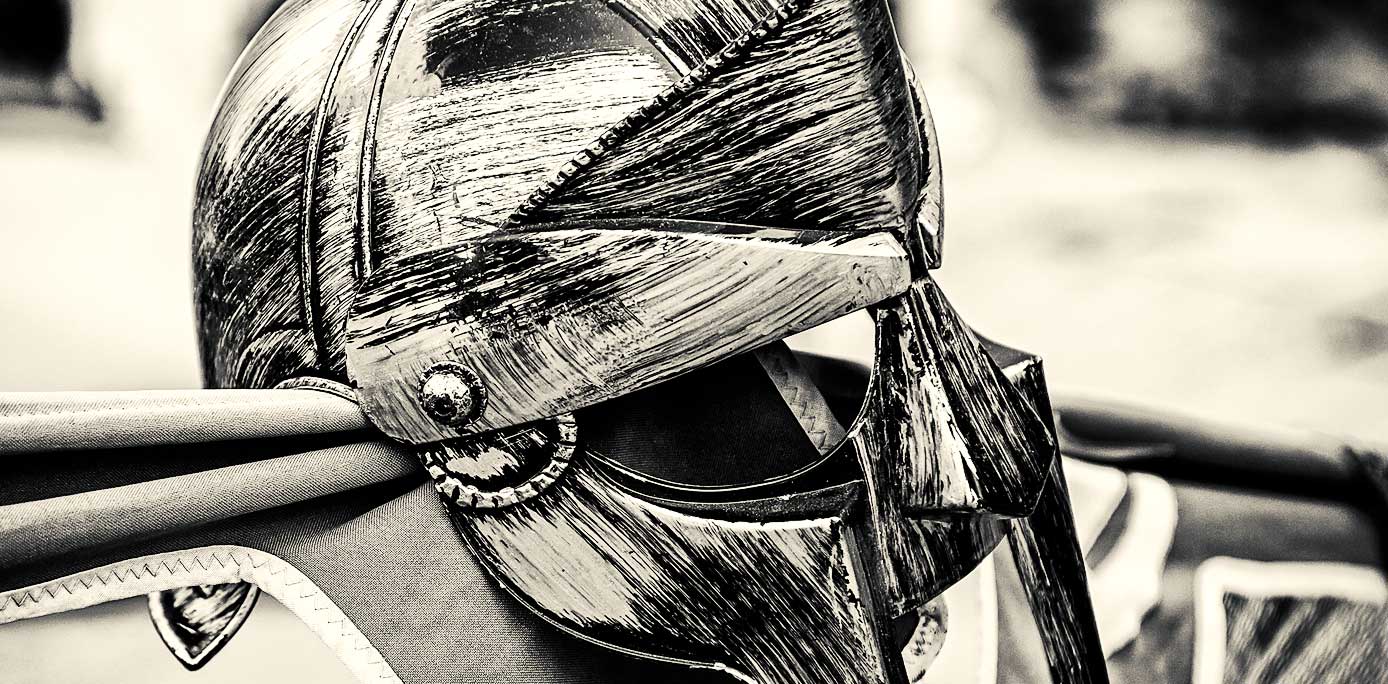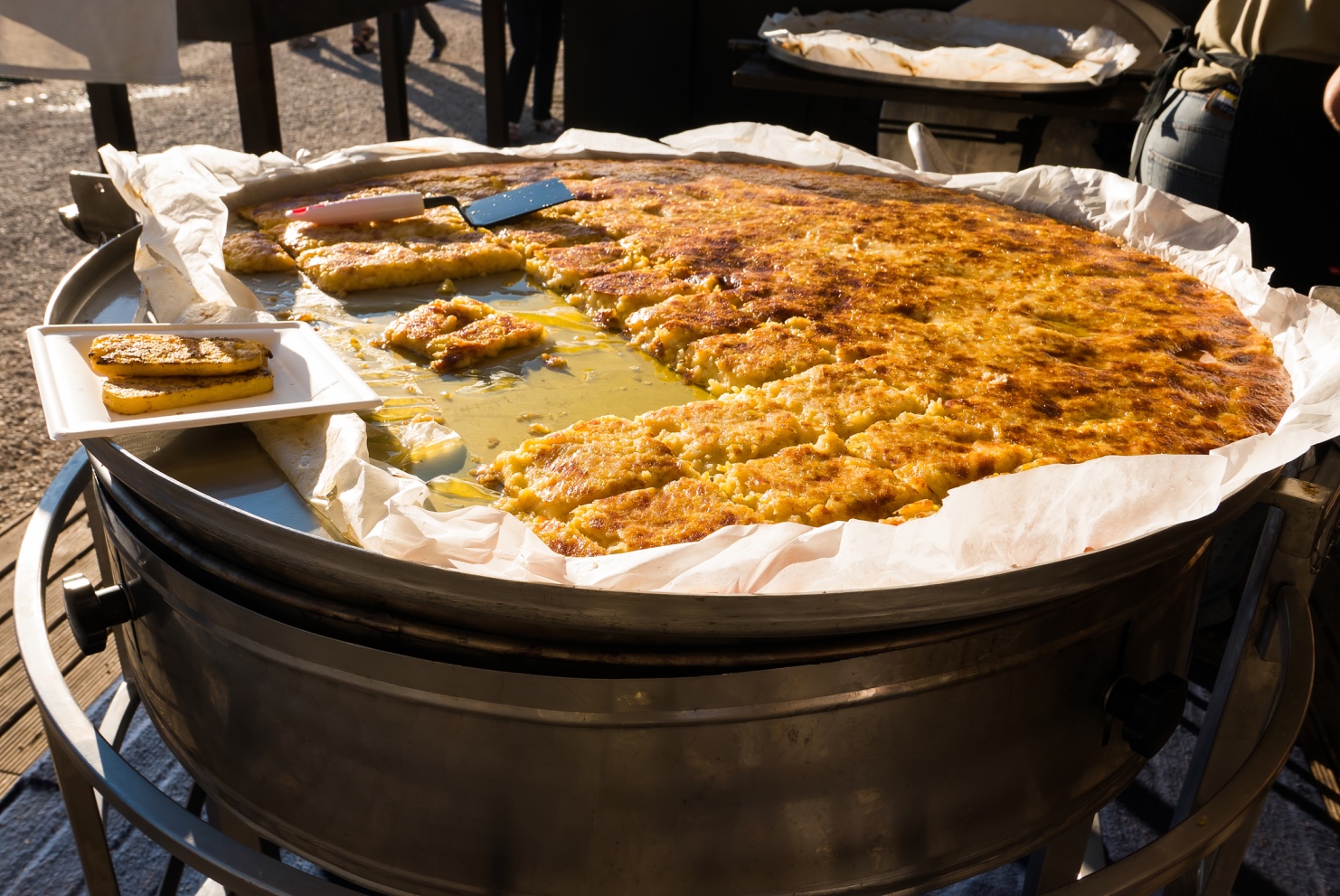Gladiators: the stars of the ancient Roman world: but it’s not gold all that glitters.
Before Pompeii and Hercolaneum were rediscovered by archaeologists in the 18th century, we knew relatively little about them and the way they lived, but today, also thanks to the findings coming from these two cities, we can reconstruct fairly well the way these entertainment-warriors were selected, perceived by the public and trained.
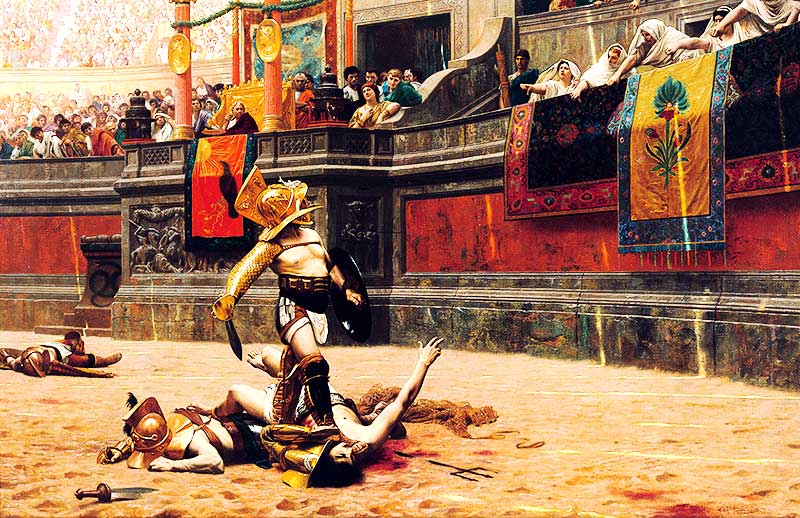
Gladiators, this is how they were: strong, idolized, at the centre of attention. And not necessarily slaves and prisoners
Who were they?
First of all, gladiators were not a prerogative of the Romans: indeed, sources tell us that the Etruscans, too, had a penchant for arena fights, a way to entertain but also a window for the rich and famous of the time to show off their wealth and power. In this, our cousins the Etruscans were not much different from our forefathers, the Romans, who used gladiatorial games as a way for the Emperor to display power, riches and, often, his right of life and death upon other human beings. Mind, in Roman times gladiators also had a pretty strong political role: rulers used them and their combats to sweeten up common people and bring away their attention from more pressing issues such as high taxes, lack of food, poverty, another war to fight.
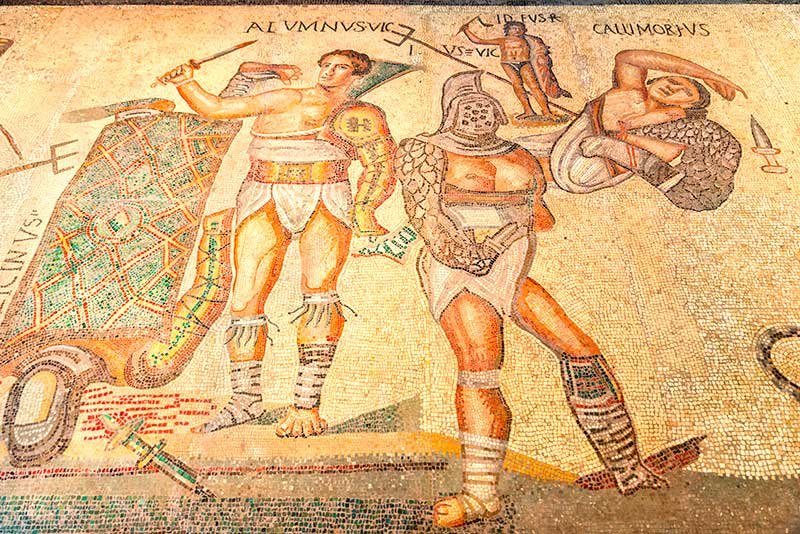
Ancient Roman floor mosaic depicting gladiators in the Galleria Borghese
Thanks to archeological research, we know today that Roman gladiators were usually aged between 20 and 35 and had an average height of 1.68 meters (around 5ft5in): do you think they are tiny? Well, not for those times, when the average height for a man was just that.
But the first question to ask ourselves is: who were gladiators and where did they come from? Well, there is a fairly widespread misconception they were exclusively war prisoners and slaves forced into fighting for the sake of Roman pleasure, but sources tell us a fairly different story. If, indeed, a great part of them had been captured during combat and forced into becoming an arena hero (a bit like the way you see in the movie Gladiator, with Russell Crowe, where his best fighter friend was a captured enemy warrior), there is proof quite a good amount of free, Roman men decided to take up this dangerous carrier. Dangerous, yes: because you virtually risked your life every time you went to work, but the rewards could be incredible, if you were good and lucky.
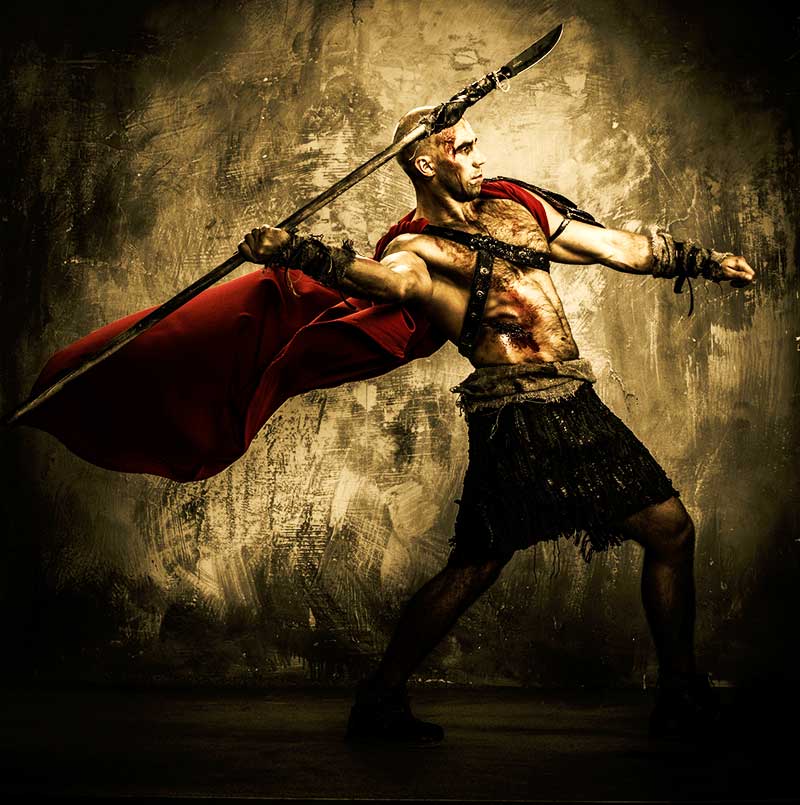
Gladiator in red coat throwing spear
Free gladiators came usually from Rome’s poorer social strata, and saw the arena as a way to gain prestige, popularity and, first and foremost, wealth: the best gladiators were protected by noble families, received lavish gifts and could in fact lead a pretty glamorous lifestyle. Many of them, it seems, were also favorites in the bedrooms of Rome’s most powerful Matrons: it is even said that Eppia, wife of a Roman senator, abandoned her husband to be with a gladiator.
Living as a gladiator
In many a way, gladiators in Rome were like modern day athletes. They bonded during training and fighting and often shared profound friendships, to the point official unions called collegia were formed. Collegia took care of many aspects of the life of gladiators, including the expenses related to their funeral and burial, should they die during a combat, and financial compensation for their family.
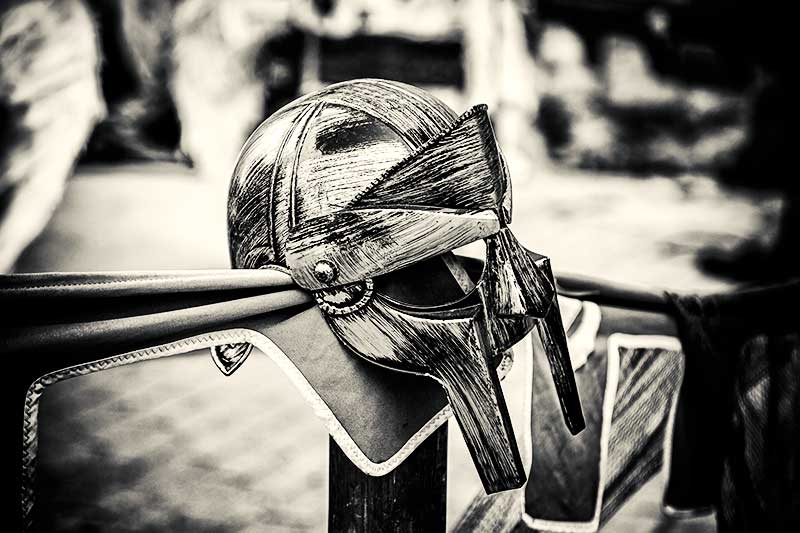
Gladiators, this is how they were: strong, idolized, at the centre of attention. And not necessarily slaves and prisoners
If you wanted — or were selected — to become a gladiator, you had to attend one of the Empire’s gladiatorial school, the most important of which was in Capua. And, just as it happens today with footballers or other athletes, there were bona fide talent scouts cruising the Empire, looking for fresh talent to add to their “teams.” If you were a free man, they’d entice you to become a fighter with tales of wealth and status; if you were a slave or a prisoner, you had no choice but go with them.
Life in the gladiatorial school was very strict: all men had to train daily and it was not all about fighting. Indeed, the first months were dedicated to become “gladiator fit,” which means physical exercise and strain could become rather excruciating. They all followed a healthy, three-meal-per-day diet, which is thought to have included fruit, vegetables, cheese, grains and meat, although recent archaeological findings appear to prove many gladiators were, in fact, vegetarians.
But the comparison with modern athletes ends pretty much here: all gladiators attending school had to sleep and spend all of their free time in shackles and they were freed from them only while training and eating. They would fight four to five times a year, and most of them specialized in specific types of combat. A harsh life, for sure, but the rewards were worthy in the eye of a vast majority of them, because gladiators were the Empire’s stars: they endorsed products, their portraits were placed in public places, children had toys — often clay figurines — modeled after them. They were, we said, also considered great lovers and Roman women thought their sweat was aphrodisiac.
Little curiosities about our fighting heroes
Gladiators have always been very popular characters of Roman history: they embody strength, courage and have also a good deal of sex appeal, as we have seen. But there are many things we believe about them that are not as true as we think.
For instance, not all gladiators were men: women liked their fighting, too. Contrarily to men, though, their vast majority chose to become fighters freely, attracted by the lifestyle and by the allure of the arena. There is also a lot to say about the gladiators and death: while the risk of not ending up alive at the end of a combat was certainly high, death in the gladiatorial arena was not as common as many of us may have learned from history books and tv; indeed, gladiators were only part of the arena entertainment offered during the games, which usually involved also animal fights and, alas, executions.
This meant that people got their need for blood and gore out of the way by the time gladiators came “on stage,” which often allowed them to end up their fights alive, even if they lost. Last but not least, our gladiators had their own energy drinks, too: apparently, they would mix together water, vinegar and wood ashes to create an reinvigorating concoction, the chemical traces of which were found in the bones of gladiators analyzed few years ago by the people of the Medical University of Vienna.
Gladiatori: le stelle dell’antico mondo romano: ma non è tutto oro ciò che luccica.
Prima che Pompei ed Ercolano fossero riscoperte dagli archeologi nel 18° secolo, sapevamo relativamente poco su di loro e sul modo in cui vivevano, ma oggi, anche grazie ai reperti provenienti da queste due città, siamo in grado di ricostruire abbastanza bene il modo in cui questi guerrieri-intrattenitori venivano selezionati, percepiti dal pubblico e formati.
Chi erano?
Prima di tutto, i gladiatori non erano una prerogativa dei Romani: infatti, le fonti ci dicono che anche gli Etruschi avevano un debole per i combattimenti nelle arene, un modo per intrattenere, ma anche una vetrina per i ricchi e famosi del tempo per mettere in mostra la loro ricchezza e potere. In questo, i nostri cugini Etruschi non erano molto diversi dai nostri antenati, i Romani, che usavano i giochi dei gladiatori come un modo per l’Imperatore di mostrare potenza, ricchezza e, spesso, il suo potere di vita e di morte su altri esseri umani. Badate, in epoca romana i gladiatori avevano anche un ruolo politico piuttosto forte: i governanti usavano loro e i loro combattimenti per tenere buona la gente comune e distrarre la loro attenzione da questioni più urgenti: come le imposte elevate, la mancanza di cibo, la povertà, un’altra guerra da combattere.
Grazie alla ricerca archeologica, sappiamo oggi che i gladiatori romani erano solitamente di età compresa tra i 20 e i 35 anni e avevano un’altezza media di 1,68 metri: pensate che fossero bassi? Beh, non per quei tempi, quando l’altezza media per un uomo era proprio questa.
Ma la prima domanda da porsi è: chi erano i gladiatori e da dove venivano?
Beh, c’è un equivoco abbastanza diffuso sul fatto che fossero esclusivamente prigionieri di guerra e schiavi costretti a combattere per il piacere romano, ma le fonti ci raccontano una storia piuttosto diversa. Se, in effetti, gran parte di loro veniva catturata durante i combattimenti e costretta a diventare un eroe dell’arena (un po’ come nel film Il Gladiatore, con Russell Crowe, dove il suo miglior amico combattente era un guerriero nemico catturato), ci sono prove che una buona quantità di uomini romani, liberi, decideva di intraprendere questa pericolosa carriera. Pericolosa, sì: perché praticamente si metteva a repentaglio la vita ogni volta che si andava a lavorare ma le ricompense potevano essere incredibili, se si era capaci e fortunati.
I gladiatori liberi venivano di solito dagli strati sociali più poveri di Roma, e vedevano l’arena come un modo per ottenere prestigio, popolarità e, prima di tutto, ricchezza: i migliori gladiatori erano protetti dalle famiglie nobili, ricevevano doni generosi e potevano condurre una vita piuttosto glamour. Molti di loro, a quanto pare, erano anche i favoriti nelle camere da letto delle più potenti Matrone di Roma: si dice addirittura che Eppia, moglie di un senatore romano, abbia abbandonato il marito per stare con un gladiatore.
Vivere da gladiatore
Per molti versi, i gladiatori a Roma erano come gli atleti moderni. Facevano amicizia durante gli allenamenti e le battaglie e spesso condividevano profonde amicizie, al punto che si formavano unioni ufficiali chiamate Collegia. I Collegia si prendevano cura di molti aspetti della vita dei gladiatori, incluse le spese relative ai loro funerali e sepolture, se morivano durante un combattimento, e a un sostegno economico per le loro famiglie.
Se volevi – o venivi selezionato per – diventare un gladiatore, dovevi frequentare una delle scuole gladiatorie dell’Impero, la più importante delle quali era a Capua. E, proprio come accade oggi con atleti e calciatori, c’erano veri talent scout che attraversavano l’Impero, alla ricerca di nuovi talenti da aggiungere alla loro “squadre”. Se tu eri un uomo libero, ti avrebbero invogliato a diventare un combattente con racconti di ricchezza e status. Se eri uno schiavo o un prigioniero, non avevi altra scelta che andare con loro. La vita nella scuola dei gladiatori era molto severa: tutti gli uomini dovevano allenarsi ogni giorno e non si trattava solo di combattere. In effetti, i primi mesi erano dedicati a ottenere la “forma fisica da gladiatore”, il che significa che l’esercizio fisico e la fatica potevano diventare piuttosto pesanti. Tutti seguivano una dieta sana, con tre pasti al giorno, che si pensa includessero frutta, verdura, formaggi, cereali e carne, sebbene recenti risultanze archeologiche sembrano dimostrare che molti gladiatori fossero in realtà vegetariani.
Ma il confronto con gli atleti moderni si conclude praticamente qui: tutti i gladiatori che frequentano la scuola dovevano dormire e trascorrere tutto il loro tempo libero in catene e venivano liberati da esse solo durante gli allenamenti e al momento di mangiare. Combattevano da quattro a cinque volte l’anno e la maggior parte di loro si specializzava in specifici tipi di combattimento. Una vita dura, di sicuro, ma le ricompense erano degne agli occhi di una gran parte di loro, perché i gladiatori erano le stelle dell’Impero: promuovevano prodotti, i loro ritratti venivano collocati nei luoghi pubblici, i bambini avevano giocattoli – spesso figurine di creta – modellati come loro. Erano, dicevamo, considerati anche grandi amanti e le donne romane pensavano che il loro sudore fosse afrodisiaco.
Piccole curiosità sui nostri eroi combattenti
I gladiatori sono sempre stati personaggi molto popolari della storia romana: incarnavano forza, coraggio e avevano anche una buona dose di sex appeal, come abbiamo visto. Ma ci sono molte cose che crediamo di loro che non sono poi così vere come pensiamo.
Ad esempio, non tutti i gladiatori erano uomini: anche alle donne piaceva il combattimento. Contrariamente agli uomini, però, la maggior parte di loro sceglieva di diventare una combattente liberamente, attratta dallo stile di vita e dal fascino dell’arena. C’è anche molto da dire a proposito dei gladiatori e la morte: mentre il rischio di non finire vivo alla fine di un combattimento era certamente alto, la morte nell’arena dei gladiatori non era così comune come molti di noi può avere imparato dai libri di storia e dalla tv; infatti, i gladiatori erano solo una parte dell’intrattenimento dell’arena offerto durante i giochi, che di solito includeva anche lotte di animali e, sì, esecuzioni. Ciò significava che le persone che avevano bisogno di sangue si allontanavano quando i gladiatori salivano “sul palco”, il che spesso permetteva loro di finire vivi i combattimenti, anche se avevano perso.
Ultimo ma non meno importante, i nostri gladiatori avevano anche le loro bevande energetiche: a quanto pare, mescolavano acqua, aceto e ceneri di legno per creare un intruglio rigenerante, le cui tracce chimiche sono stati trovate nelle ossa di gladiatori analizzati alcuni anni fa dal personale dell’Università di Medicina di Vienna.




